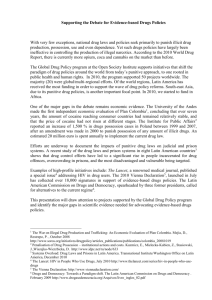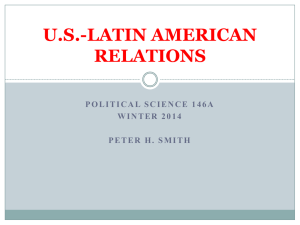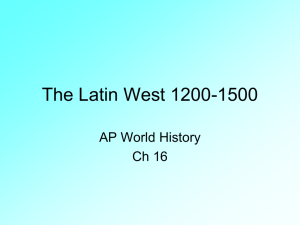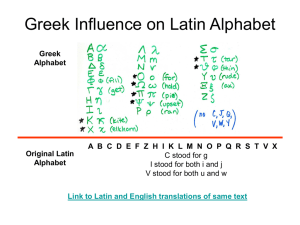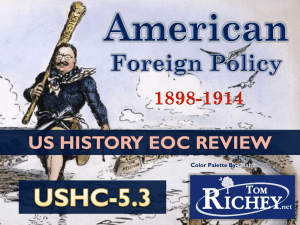United States Influence in Latin America
advertisement
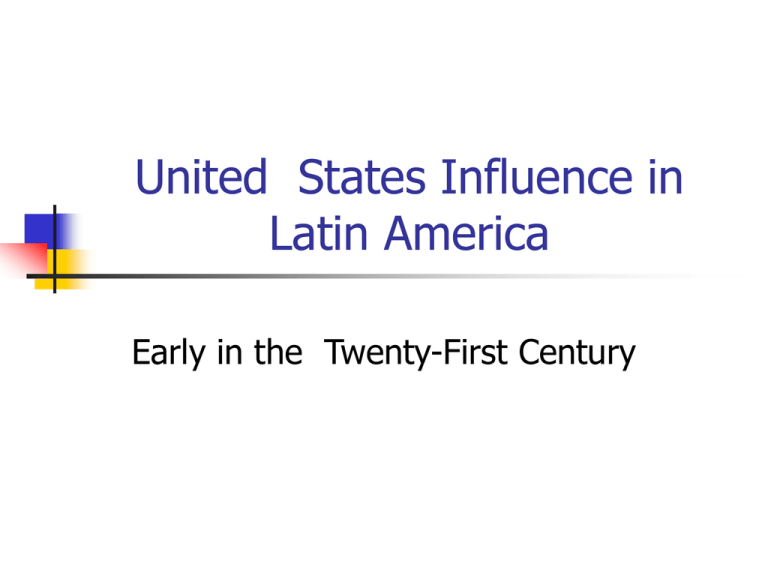
United States Influence in Latin America Early in the Twenty-First Century Teaching Democracy to our “Children” DISTANCING?? Are Latin Americans distancing themselves from the United States at a moment when the United States has become the only global superpower and the largest and most influential external force in the Latin American environment? Structural Perspective: United States Influence Remains MULTIFACETED & Intense Society Education Financial system Other Dimensions of United States Influence: Culture Consumption patterns Lifestyle Relational Perspective Quiet phenomenon of relational delinking is going on Washington no longer the main agenda setter in the region Reduction in diplomatic influence can’t be compensated for through economic means In Addition Globalization has diminished the influence of all nation states Convergence of Interests No longer disillusionment because of lack of attention Values and interests of the two peoples is more alike – perhaps?? Democracy Free market capitalism Washington: More Relaxed with the End of the Cold War Economic potential of Latin America occupies center stage Drugs: important but less a matter of survival Terrorism’s impact yet to be seen on hemispheric relations Diversification Remains Important Failed and unfortunate attempts of the 1960’s have not been forgotten Europe as a more natural partner in diversification Asia-Pacific region now taken seriously Ibero-American summits (since 1991) Regional economic organizations Economic Dependence is Different in the 21st Century Latin America is an important target for U.S. exports Competition with other export blocs is fierce Latin America has increased its exports to the United States, but as a share of total U.S. purchases the region’s importance has declined Latin Americans (except Mexico) are increasing their trade with each other United States citizens are divided over increased economic interaction with Latin America U.S. government is having problems in gaining fast track authority from congress (eg: close call CAFTA) Economic assistance has been reduced sharply Latin Americans searching for alternatives to linkages with the United States economy Manifestations of More Assertive New Latin American Regionalism U.S. on the margins at hemispheric meetings during the 1990’s Mercosur: important economic concern of Brazil, Argentina, Uruguay and Paraguay Government to government Private sector (local) Declarations on the Defense of Democracy (XI Summit of heads of state of the Rio Group – 1997) Contemporary Reality Economic importance of United States remains high Market oriented policies and have turned inter-American trade & investment into private channel relations Disappointment growing with results of market-oriented policies More Contemporary Realities Other countries are challenging United States influence, especially in South America Venezuela Argentina Brazil Influence stemming from government policies and preferences is much reduced Helms-Burton has had little impact Ernesto Samper completed his presidency despite having his tourist visa revoked CONCLUSION United States and Latin America have grown apart in recent years Will this new reality facilitate a mature and mutually advantageous relationship? In any case: unlikely that InterAmerican relations will repeat the patterns of the 1960’s. 70’s and 80’s.




